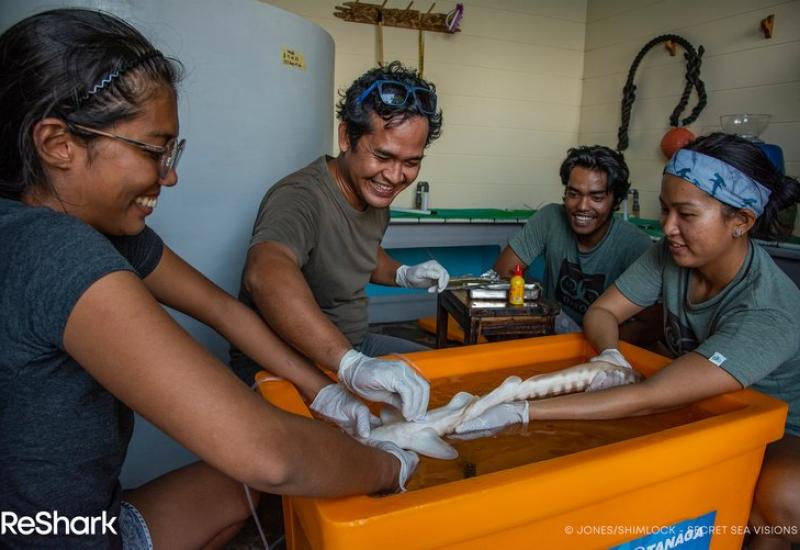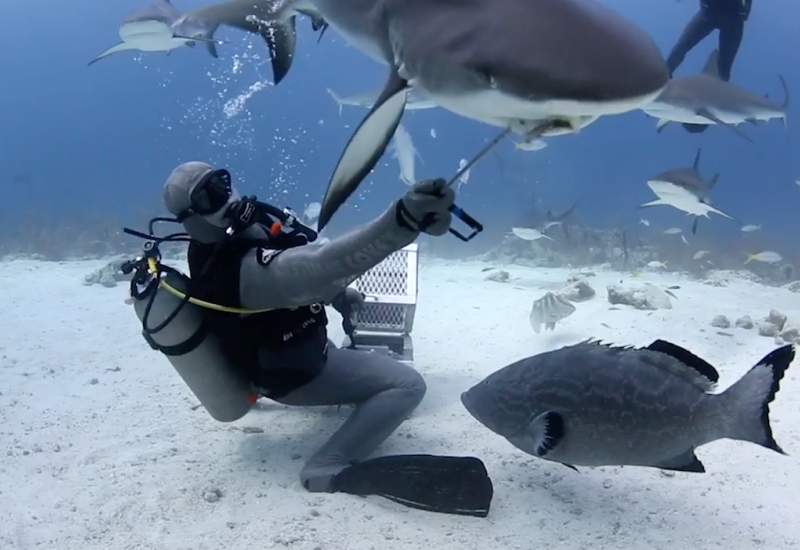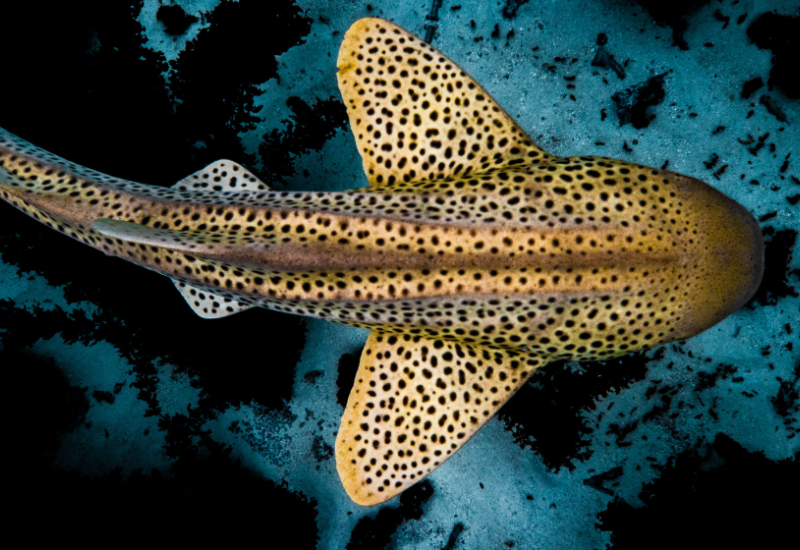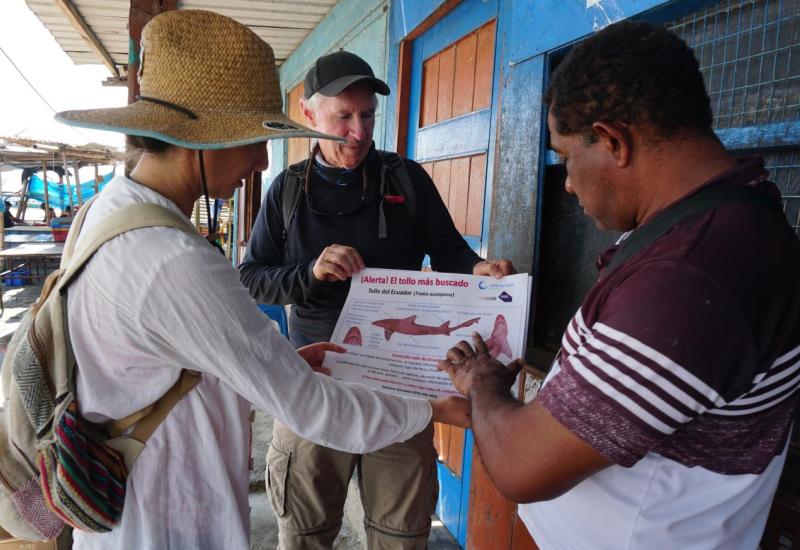Explore Shipwrecks and See Sand Tiger Sharks Diving in North Carolina
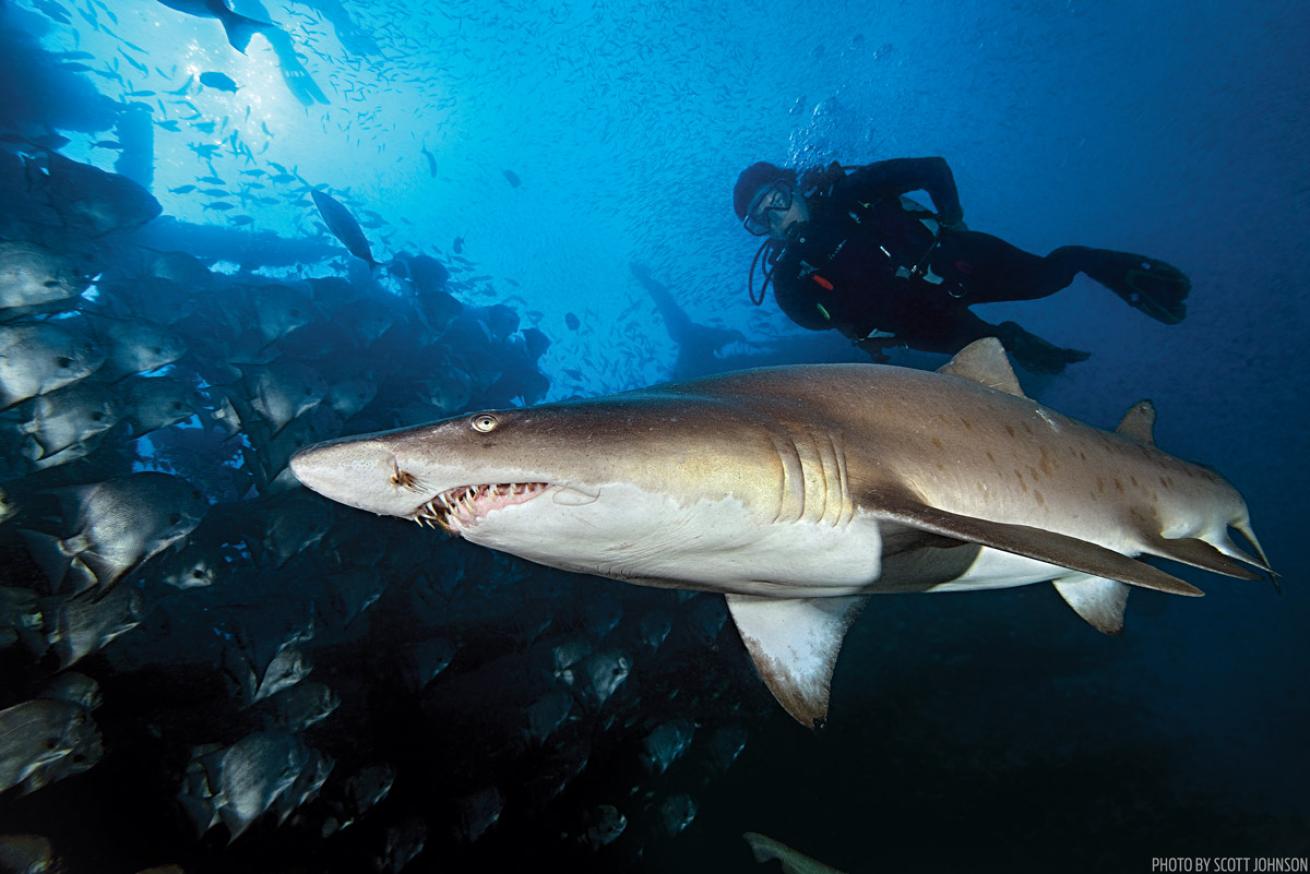
Scott JohnsonThe author follows behind one of the many sand tiger sharks at the Atlas wreck.
This shark dive began with no chum, no briefing on kneeling on the sand. Ninety feet down on the SS Papoose, as six sand tiger sharks surround me, I realize I need to toss out everything I know about shark behavior — and I’m stoked.
Sand tigers are one of the biggest reasons to drive to Morehead City, located roughly midway south along North Carolina’s coast. The others: the U-352, a German submarine at 115 feet, and 20 or so additional wrecks, cruising grounds for the sharks found here year-round thanks to a couple of factors, notably the colliding Labrador and Gulf Stream currents. These supply a steady stream of nutrients and make it nearly impossible to predict dive conditions. The crew at Olympus Dive Center — the biggest scuba operator in town — is used to starting days with perfect forecasts and fat seas, only to be running from threatening skies and 5-foot waves by lunch time. You’ll see this variability in the water too — you can have 80 feet of visibility at one site and 40 at a site less than a mile away.
Finding the sharks is a similar gamble. There could be 100 or zero on wrecks like the Papoose, USCGC Spar, SS Caribsea and USS Aeolus — the hit list for our wreck shootout, a five-day photography competition organized by Mike Gerken, a shooter and former boat captain for Olympus, which hosts the competition. And the only way to tell where the sharks are is to drop in or radio another dive boat in the area to ask for a shark report.
Today, we’ve started out lucky: sunny skies, fat seas and a handful of sand tigers on the first dive. At depth, I understand why North Carolina is rumored to be a favorite location of National Geographic photographer David Doubilet. The distance — two-hour boat rides are common — limits runoff and the number of day boats; the reward is fish schools in numbers that far outrank other East Coast destinations.
And they’re what I notice first. Like the spinning clouds that surround the Peanuts character Pigpen, mini tornadoes of cigar minnows surround every sand tiger. Each baitfish reflects the sunlight in a different direction, creating the effect of a disco ball rolling toward you.
But what puzzles me about the sand tigers is how they glide — they barely swim. They move nothing like Caribbean reef sharks. Or bulls. Or oceanic whitetips. Other sharks never stop moving, but thanks to a makeup that does not require speed to oxygenate their systems, as many shark species do, sand tigers swim in low gear. They’re slow. Lumbering. And although I’m sticking to shark-diving basics such as keeping my arms at my sides, I’m finding I can swim much closer; these sharks don’t spook easily. Because there was no bait, I don’t have to stay in one spot to be near the action. I’m as close as my fins will carry me.
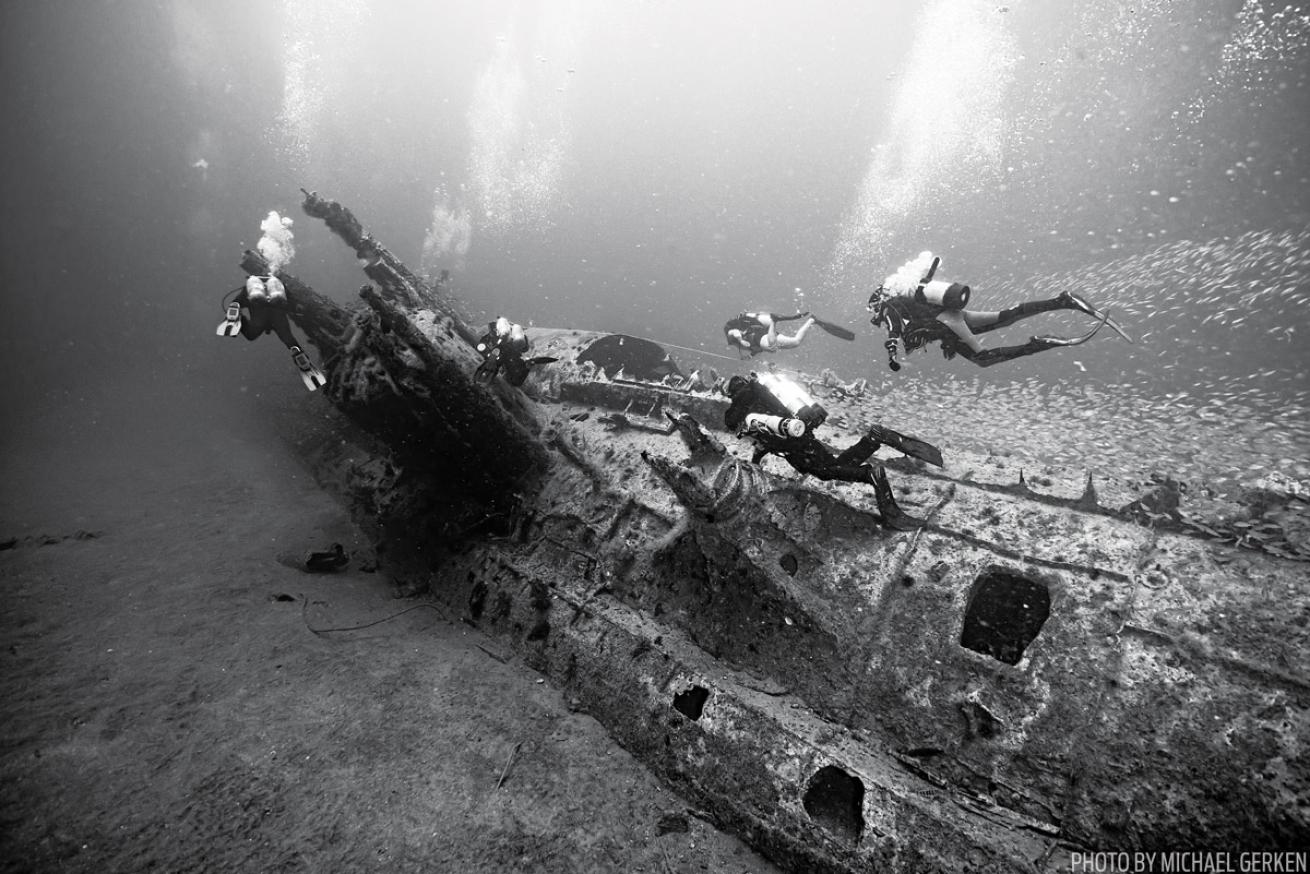
Michael GerkenAt wrecks like U-352, divers can get up close with sand tiger sharks and cigar minnows.
The interaction allows for extended eye contact. Time to appreciate the uneven rows of curved teeth beckoning toward the back of their gullets. Where the Caribbean reef shark appears more well mannered, with its mouth nearly shut, just the hint of teeth visible, this mess of points — an aw-shucks underbite — seems somehow more menacing. And yet, this species hasn’t been involved in any human fatalities.
On dive two, the boat relocates to the nearby Spar. This 180-foot buoy-tender-cum-artifcial-reef would be a curious enough attraction for any underwater tour, but it’s the big fish we’re after. The way the water flows along the bow attracts the sharks, so all the divers concentrate here at this stretch, a catwalk for 12 that strut up and down this corridor. It’s a bit of a cluster as photographers take turns swimming with a different shark to get a shot, but the overlap is nothing like the limited space found along the horseshoe shape that defines most shark dives.
The following day, we target the Atlas, a 430-foot tanker sunk by torpedo in 1942. The crew moors to the bow, where there sits a boxlike structure described as a rusted-out skyscraper of sorts. The rest of the ship would also be of interest to the metal-inclined, but we stick to this structure — because the sharks do.
As we drop into the intersection of their traffic, I’m reminded of what Gerken had said on the surface.
“It’s not so much that these sharks come close to you as you’re in their territory.”
Their territory extends to the ship’s interior cavities, which I find as I drop down into one. The room is maybe 25 feet by 25 feet, and yet a sand tiger and I manage to swim circles around each other in these tight confines.
Because there are 23 sand tigers at this location, we unanimously decide to stay here for the second dive. After all, when you’re shark diving in the wild, you have to consider hopping between wrecks much like one would with house parties: Never leave for a new party when you’re already at one that’s going off.
ITINERARY NORTH CAROLINA
Day One
Check in at the Hampton Inn Morehead City, which includes free breakfast, or the more affordable Olympus Dive Center Dive Lodge two blocks from the shop, with space to host 32 in five shared rooms. After you settle in, have an early supper at Channel Marker restaurant on the Atlantic Beach Causeway. Watch boats cruising under the bridge while you tuck into dishes like crabcakes or she-crab soup with sherry; the crab-stufed founder in a creamy mustard sauce is decadent, yet not a gut bomb.
Day Two
The dive day starts at 6 a.m. at Olympus Diving. Make sure you’ve packed breakfast, and a cooler with a sandwich, snacks and drinks for the long day on the water; you’ll also want a hat and sunscreen to take advantage of the ship’s sun deck. The boat typically returns around 3 or 4 p.m. If you can, nap before dinner at Floyd’s 1921. Dine inside for a more upscale selection of eats, such as plank-roasted salmon. Head to the patiofor casual dining, including tapas, and live music on most Sunday and Monday evenings.
Day Three
Spend another day on the water — you’ll be happy that you did. Afterward, as your gear dries, enjoy time on the sand at Atlantic Beach. Fort Macon State Park is 10 minutes by car from Morehead City; learn the interesting role it played in Civil War-era North Carolina and beyond. If you have time for one last meal before starting the return trip, try City Kitchen in the Town Creek Marina for seafood with a twist. Menu highlights include fish and chips with malt vinegar aioli and shrimp ravioli.
NEED TO KNOW
When To Go Olympus Dive Center operates charters year-round; summer brings warmer water, and thus a greater demand for diving —boats depart daily. The rest of the year, charters are weekends only.
Dive Conditions Conditions in North Carolina can vary wildly day to day. Visibility can jump from 30 to 80 feet within days. In the summer, expect water temperatures in the high 70s; come winter, water temps fall to the mid-50s.
Operators Olympus Dive Center (olympusdiving.com) is located waterfront in Morehead City; its dock is just outside the shop’s door. Nitrox is available for certifed divers.
Click here for more Drive and Dive adventures!

